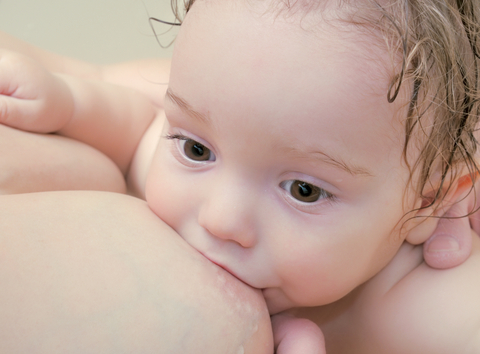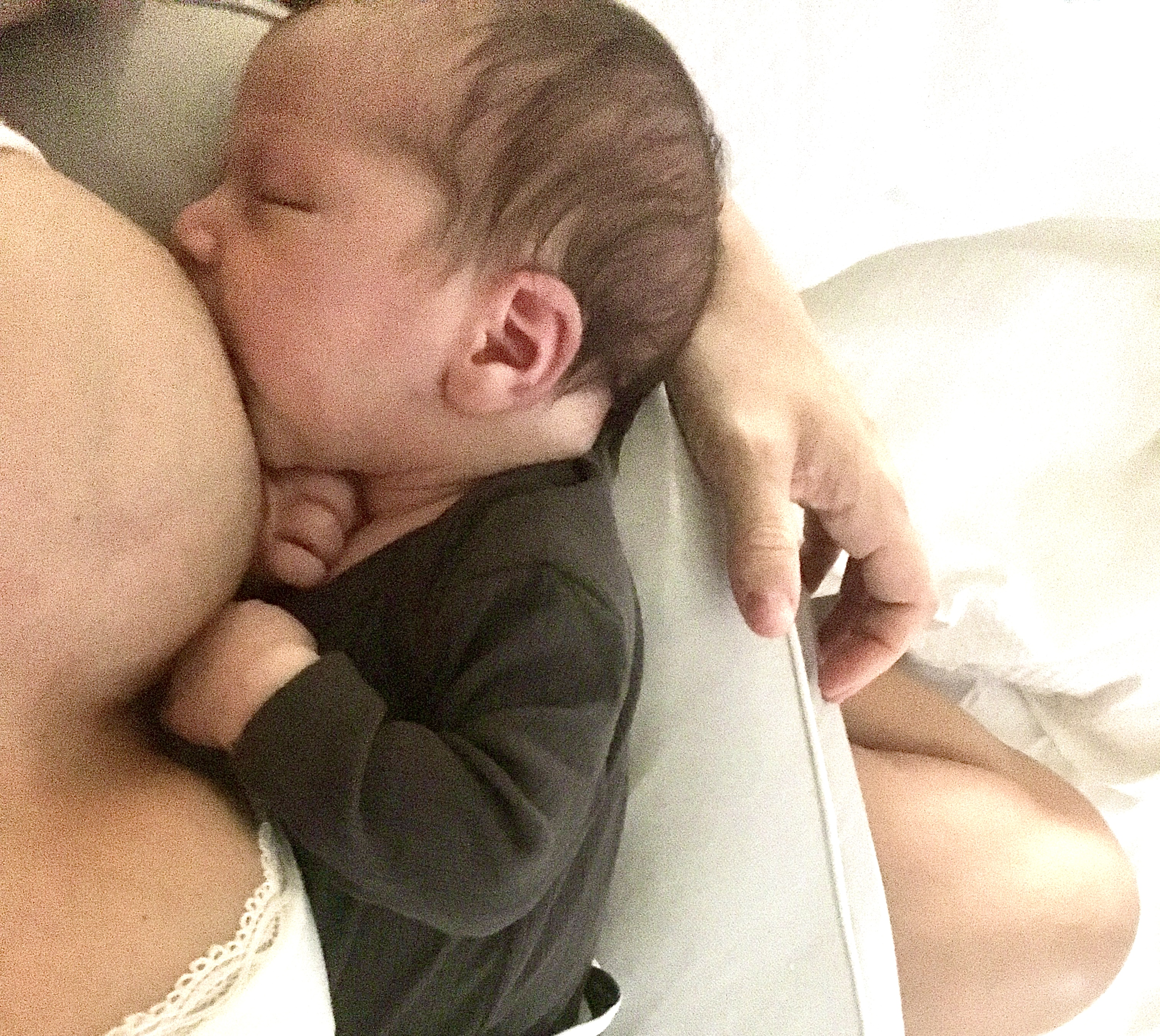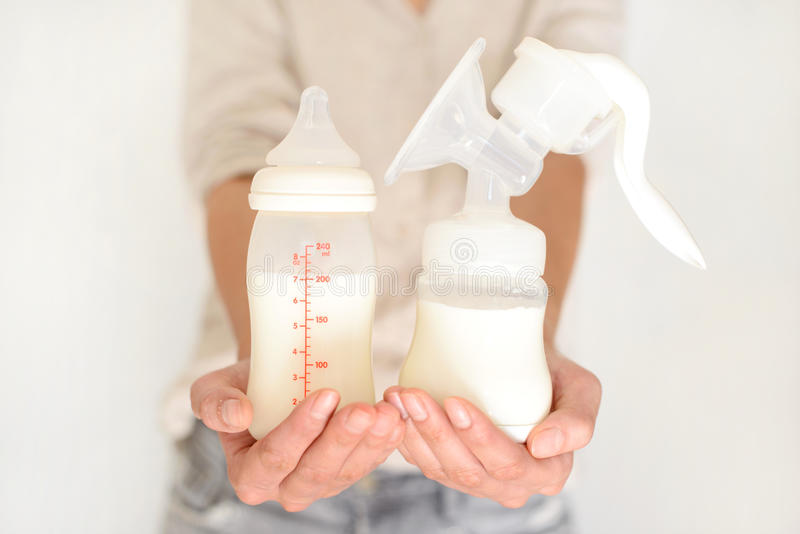7 Breastfeeding Myths Busted - What is the Truth?
Aug 05, 2024
By Pinky McKay
Cover image with thanks to @mamabearathletic
From the time you announce your pregnancy, it seems that everyone, from the person behind you in the checkout line to strangers on social media, wants to share their advice. Personal questions are not ‘off-limits’ so you are sure to be asked whether you plan to breastfeed – and you will be bombarded with even more advice.
My best advice around advice is, ‘don’t let anybody ‘should’ on you’. You are the expert about your body and your baby, trust your baby and trust yourself and that powerful connection you have with your little one. If you feel confused about any advice (the noise is loud, and it can be hard to switch out the ‘shoulds’), try filtering it by checking, ‘is it safe? Is it respectful? Does it feel right?’
Meanwhile, let’s bust some common myths about breastfeeding:
1) You need to space feeds to give your breasts time to ‘fill up’

This is one of the biggest lies about breastfeeding: breastfeeding works on a theory of supply and demand – the more milk that is removed from your breasts, the more milk your body will produce. By spacing feeds, rather than feeding according to your baby’s huger cues, your body will receive the signal to slow milk production. This can result in a reduced milk supply.
Babies will vary in the amount of milk they drink at each feed and women’s milk storage capacities also vary (this isn’t necessarily related to the size of your breasts), so some babies will go longer between feeds than others.
Babies also have ‘frequency days’ when they will feed more often, perhaps due to a growth spurt, a developmental leap or if they have been exposed to a bug and need a big dose of immune factors to fight off an impending illness. The best advice to maintain a healthy milk supply is ‘watch your baby, not the clock.’
2) Exercise will make your milk ‘sour’
Picture with thanks to Laura King, professional and Olympic cyclist who kept endurance cycling and breastfeeding despite the onslaught of 'opinion.'
What a scary thought – all that ‘sour’ milk in your boobs!
This myth is probably based on some studies showing that although there isn’t a noticeable increase in lactic acid buildup after moderate exercise, intense exercise can increase the amount of lactic acid in your breast milk and this increase may be present for up to 90 minutes post-exercise.
Some mothers report that their baby is fussy for a while but please don’t worry, any increase in lactic acid won’t harm your baby and your baby won’t refuse to feed. However, some babies may dislike the taste of sweat, so you may have to shower or wash your breasts before you offer the breast after a workout.
For your own comfort, try breastfeeding or expressing before you do intense exercise and consider wearing a supportive sports bra that’s designed for high-impact sports. Remember to change your bra after you have finished working out as the pressure from a tight-fitting bra, especially with full breasts, may lead to blocked ducts and mastitis.
You can also be reassured that exercise won’t impact your milk supply, as long as you stay hydrated and nourished and feed your baby according to his hunger cues. Keep up your calories to replace energy – breastfeeding burns around 500 calories a day so add the calories burned while working out and this could impact your milk supply. A good rule is to keep your calories and your water bottle topped up and watch your baby (for hunger cues), not the clock!
3) You need to ‘pump and dump’ if you drink alcohol
The short answer is, pumping and dumping will not reduce the amount of alcohol in your breast milk: the level of alcohol in your milk will reflect your blood alcohol levels - and as your blood alcohol level reduces, so will the level in your milk.
The safest option if you are breastfeeding would be to avoid alcohol but if you want to drink while you are breastfeeding, it can be helpful to plan ahead: either express before drinking and feed your baby ‘alcohol – free’ milk or have a drink after you have breast-fed your baby, then wait until your blood alcohol level is safe before you breastfeed.
The Australian Breastfeeding Association advises, "as a general rule, it takes 2 hours for an average woman to get rid of the alcohol from 1 standard alcoholic drink and therefore 4 hours for 2 drinks, 6 hours for 3 drinks and so on. The time is taken from the start of drinking.
If you have left your baby with a sitter and you are planning to miss a feed, you will need to express to maintain your supply and keep your breasts comfortable. And yes, you can dump this milk – or use it in baby’s bath if you don’t want to waste your precious liquid gold.
4) Breastfed babies are ‘bad’ sleepers

Kat (creator of Hatch Athletic) breastfeeding baby Ralph
Breast milk is digested more easily than manufactured baby formula so breastfed babies will generally feed more often but they can also sleep more soundly.
Hormones in breast milk calm babies and aid sleep: your breast milk contains a range of hormones, including oxytocin, prolactin and cholecystokinin (CCK) as well as a type of endocannabinoid, a natural neurotransmitter. Research suggests that your night-time milk may even be more effective at helping your baby sleep: melatonin, a sleep inducing hormone is barely detectable in day time breast milk but peaks during the night.
Studies by Spanish scientists show that components in mother’s milk can vary significantly over a 24 hour period and concentrations of sleep inducing nucleotides (proteins known to have a role in exciting and relaxing the nervous system), were stronger after dark than during the day. Dr Christina Sanchez, the lead researcher of this study, advises that if you are expressing, it’s best to note the time you express and feed it to your baby at the same time of day.
5) The amount of milk you can pump is an indicator of your milk supply

The amount of milk you can pump shows how much milk you can pump, not necessarily how much milk you are making, unless you are an exclusively pumping mama (hats off to you if this is the case). However much milk you can express, even with the best hospital grade pump, a baby who is well attached and sucking effectively will almost always be able to get more milk than a pump.
If you are not able to pump much milk, please don’t let this create doubts about your milk supply. Some women respond better to pumps than others. A better way to affirm your milk supply is to watch your baby’s output – heavy wet nappies and bowel motions along with good weight gains are a much more reliable indicator that you are making plenty of milk and your baby is feeding effectively.
6) You need to drink milk to make milk

Have you ever seen a cow drink milk?
No, you don’t need to drink or eat any specific foods to make milk. While some foods are lactogenic and can support a healthy milk supply because they influence prolactin (your milk making hormone) production and some nutrients, such as omega 3 fats, will increase in your breast-milk when your own diet is plentiful, milk isn’t necessary to make milk.
In fact, if you drink a lot of milk, you could be displacing other nutritious foods that would be beneficial to your health. Also, some babies are sensitive to dairy protein passing through your breast milk, especially if you have a family history of allergies, asthma or eczema (your baby is never allergic to your breast milk).
The best advice regarding your diet while breastfeeding is to eat a variety of healthy, natural foods. This will maintain your own health as you breastfeed and the more you feed your baby, the more milk your body will be signalled to make (see number 1, above).
7) There is no goodness in your milk after 3 months, 6 months …..whatever
There is no ‘use by’ date on the immune factors or nutrition in breast milk. Breastfeeding continues to be an important source of nutrition and health protection, however long your baby breastfeeds. In fact, immune factors in breast milk increase during the second year of your baby’s life just as your baby is becoming more mobile and mixing socially with more people. In one study (Perrin 2016) breast milk from mothers feeding babies into the second year contained significantly higher concentrations of total protein, lactoferrin, lysozyme and Immunoglobulin A, than milk bank samples.
According to a well-known study (Dewey 2001) “Breast milk continues to provide substantial amounts of key nutrients well beyond the first year of life, especially protein, fat, and most vitamins.”
In the second year (12-23 months), 448 mL of breastmilk provides:
- 29% of energy requirements
- 43% of protein requirements
- 36% of calcium requirements
- 75% of vitamin A requirements
- 76% of folate requirements
- 94% of vitamin B12 requirements
- 60% of vitamin C requirements
(Dewey 2001)

Pinky McKay is Australia's most recognised and respected breastfeeding expert. She's an IBCLC lactation consultant, mum of five, best-selling baby care author of Sleeping Like a Baby, Parenting by Heart and Toddler Tactics (Penguin Random House) and host of podcast 'Tits Up.' She is also the creator of Boobie Foods - Boobie Bikkies and Boobie Brekkie, all natural and organic foods to nourish breastfeeding mums. Download Pinky’s FREE ebook ‘Making More Mummy Milk, Naturally’.
Like what you see? Have you seen our free resources section?
Free downloads to support you in your pregnancy and postpartum journey.



